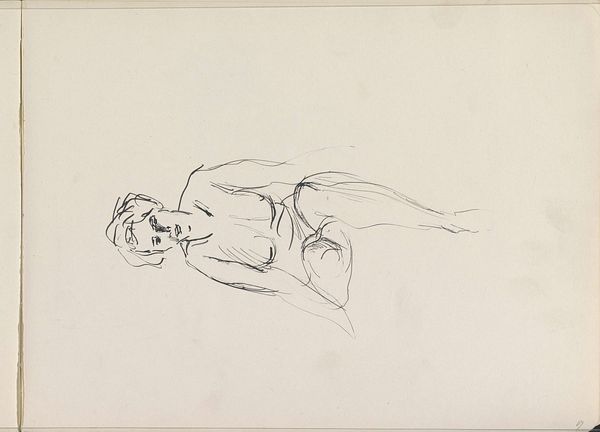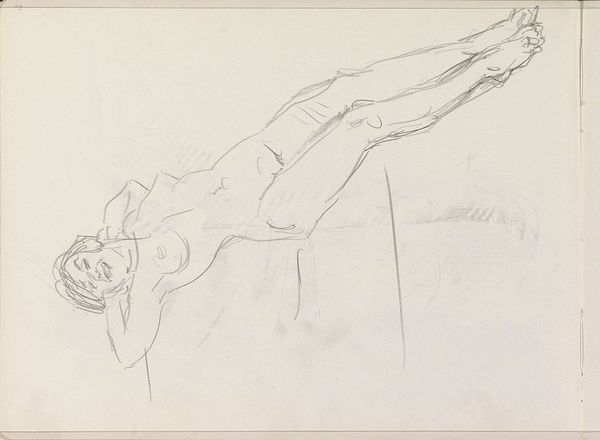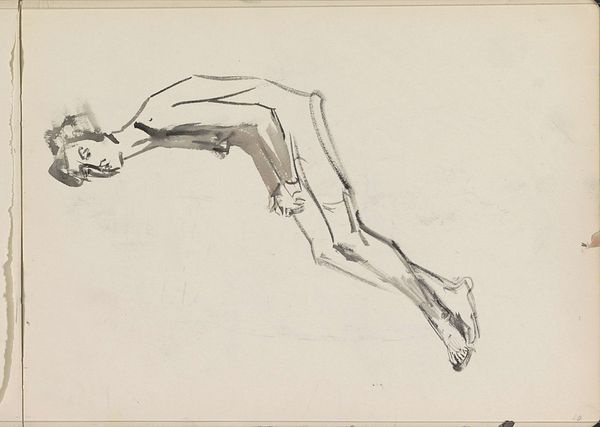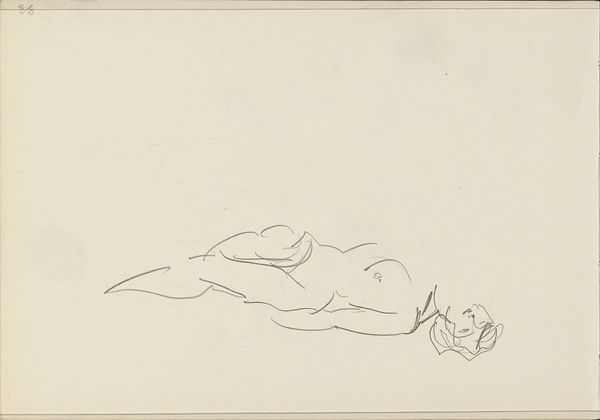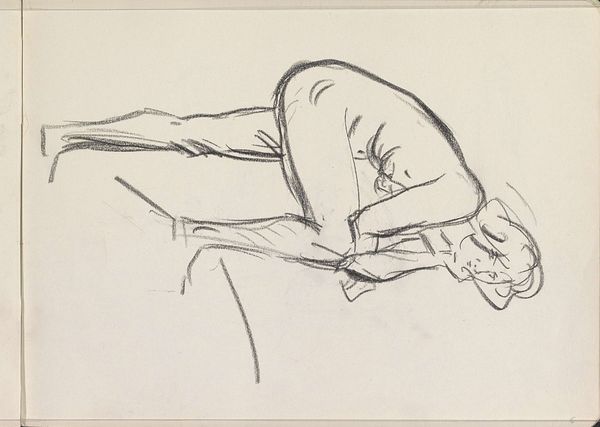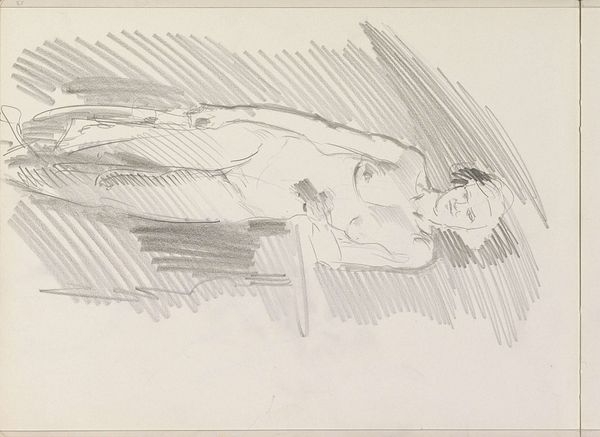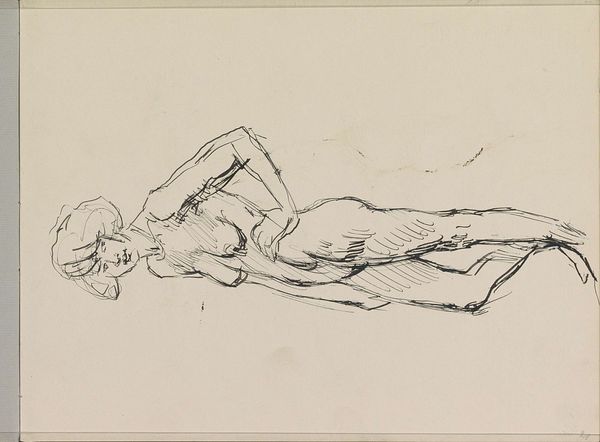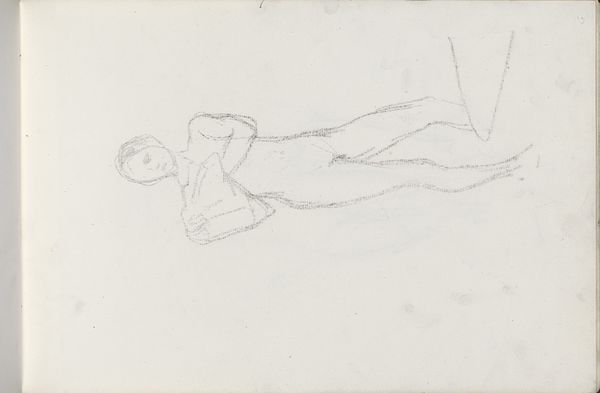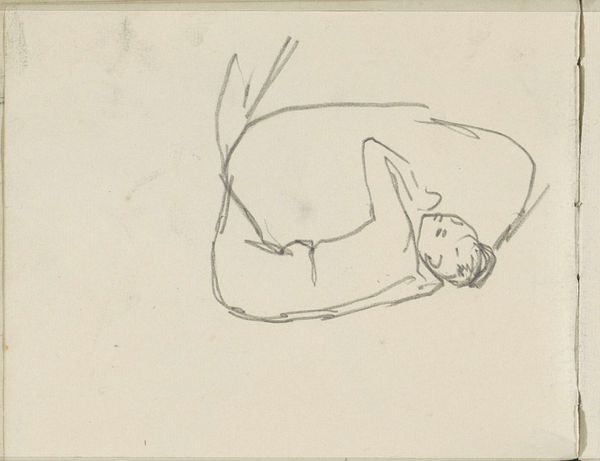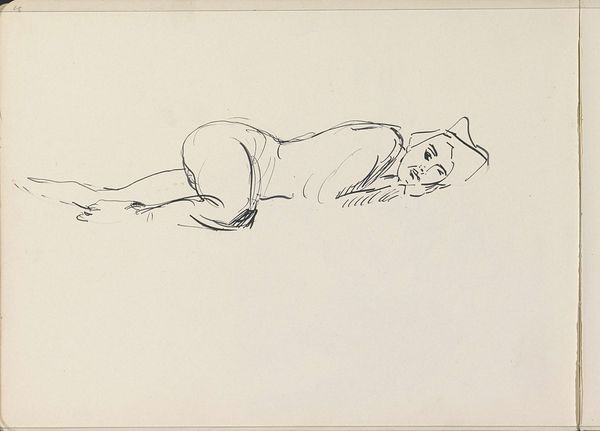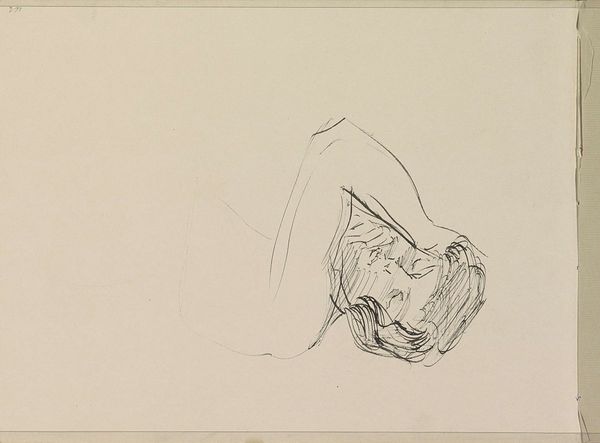
drawing, pencil
#
drawing
#
pencil sketch
#
figuration
#
pencil
#
nude
#
realism
Copyright: Rijks Museum: Open Domain
Curator: This is Isaac Israels' "Reclining Female Nude," a pencil drawing created sometime between 1875 and 1934. What strikes you about it? Editor: There’s a certain… vulnerability to it, but also a detached quality. It’s like glancing into a private moment that the subject is utterly indifferent to. The lines are sparse, but there's enough detail to evoke a sense of lived reality. Curator: It's fascinating how Israels, working with such a basic medium, captures both the intimacy and the detachment you mentioned. Pencil allows for a directness, an immediacy in the production. You can almost see the artist's hand moving across the page. This piece moves away from notions of grand artistic productions, right? It celebrates simple, affordable materials. Editor: Absolutely. The choice of pencil speaks volumes. During that time period, the proliferation of readily accessible, industrially-produced drawing materials was influencing what it meant to create and consume art. But the detached feeling that comes from seeing it reminds me how easily marginalized figures in art became objects of aesthetic exercises during this period. It brings forth questions regarding the relationship between artist, model, and the prevailing social norms. Curator: That’s a crucial point. The “how” shapes the “what” and also reveals the societal context surrounding the art object. You look at the light and shadows rendered with these simple lines, and see that perhaps it’s not an idealized view. Editor: Precisely. By calling attention to how this artwork captures this complicated power dynamic, we begin to challenge that indifference. What choices were available to the subject? And how did this artwork contribute to the market for female objectification during this time period? Curator: So even in this seemingly straightforward pencil drawing, we're confronted with layers of context that transcend the artwork itself. By scrutinizing its raw materials and acknowledging the society where it was conceived, we come away with much greater knowledge. Editor: Right. When looking through an intersectional lens, what might appear as simplicity can reveal deeply entrenched political concerns of gender, labour, and identity that defined artistic creation in its time.
Comments
No comments
Be the first to comment and join the conversation on the ultimate creative platform.
